How to wire a plug or plug wiring is not often called for much these days as most electrical appliances come with a pre-fitted plug, but should you need to know how to wire a plug and you do not know how to do it this page should help! If you are wiring a plug for equipment that will be used outdoors please ensure that it also has RCD protection.
| Before working on any electrical circuit you must ensure that it is isolated correctly and cannot accidentally be switched back on. Please read the article on safe isolation procedures before doing any electrical work. If you are not 100% certain what you are doing call a qualified electrician. Building regulations are changing all the time and modifying your home electrics could be against new rules and could invalidate your home insurance, if in doubt check first! |
Here is how to wire a plug for an appliance
Most electrical items come with a fitted plug now but just in case you need to wire a plug here are the instructions. There are three pins in the plug but sometimes on double insulated electrical items only two of these are used!
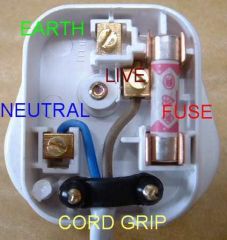
The terminal at the top of the picture is the Earth terminal, this is where the green and yellow wire goes (if there is one). Double insulated appliances do not need a earth wire! The brown wire goes to the Live terminal which is connected to the fuse, which is on the right. The blue wire connects to the neutral terminal on the left of the plug. You should also ensure that the correct fuse is fitted to the plug before use.

Here you can see three screws, the one in the centre holds the plug together and the two lower ones hold the cord grip in place. The cord grip screws must be tight and the cord grip should hold the cord sufficiently to prevent the cord from being pulled out from the plug.
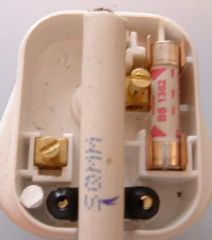
Hold the wire up to the plug ensuring that the wire reaches the furthest terminal on the plug, which will be the earth terminal. Mark a line with a pen or similar inside of the cord grip, it is essential that the cord grip grips the outer insulation on the wire and not the inner insulation of the single wires.
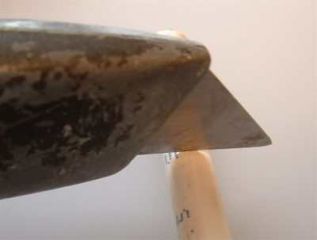
Using a sharp knife carefully score the surface of the outer insulation, making sure that the inner insulation is not cut. If you do cut the internal insulation, you will have to cut the wire completely and start again!
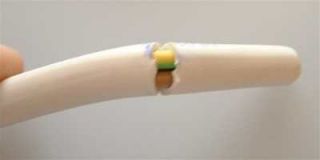
Bend the outer insulation back and forth a few times and you should then see a clean break in the insulation, like in this picture. Grab the short end with some pliers and remove the piece of insulation.
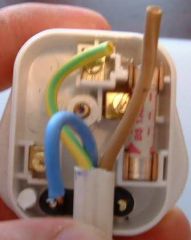
Now hold the wire up to the plug and you will see that the wires need trimming or they will be too long. Using a pen mark the correct length for the wires and cut them to the correct length
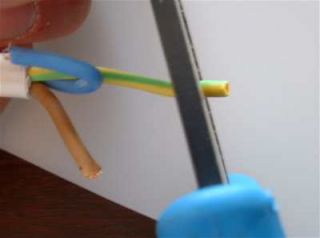
Once the wires are the correct length remove some insulation. There are two ways of doing this- I prefer removing about 10mm of insulation then twisting the cores of the wire together and folding the bare wire in half before inserting it into the terminal as this grips much better. Alternatively you can just remove about 5mm of wire and feed it directly into the terminal.
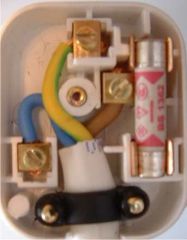
Feed the whole wire through the cord grip and Push each wire individually into the correct terminal and tighten the screws firmly. Ensure that no wires will be trapped when the top of the plug is replaced. The cord grip screws must be tight to ensure the cord cannot be pulled out of the plug!



